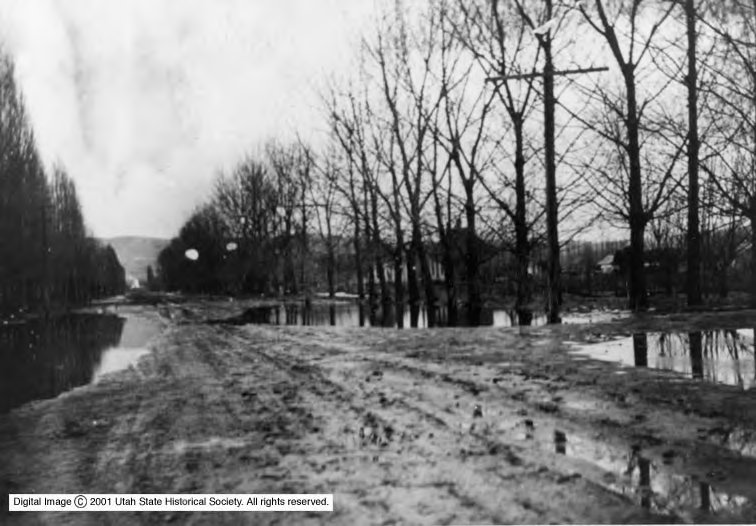Adapted from: Huchel, Frederick M. A History of Box Elder County. Salt Lake City: Utah State Historical Society, 1999; “Fielding History.” http://www.boxeldercounty.org/fielding-history.htm. Accessed May 1, 2020.

In the 1870s, John W. Hess and Isaac Zundel served as missionaries for the Church of Jesus Christ of Latter-day Saints to the Shoshone in the Bear River Valley. After their service was over, Hess returned to settle in the area, along with several other families from Farmington. The result was a spread out series of farms known as Hessville. As the church encouraged settlements to centralize, the residents of the area began to explore possible sites on which to settle and establish a townsite.
After exploring several different options, the settlers opted for the present day location of Fielding in 1892. It was named Fielding after Joseph Fielding Smith, then second counselor in the first presidency of the church of Jesus Christ. Their decision was influenced largely by the construction of the Bear River Canal system, which would provide them additional water for better agricultural production. An earlier proposed townsite would have left them above the canal, and thus without sufficient water.
Fielding was incorporated in 1914, with a population at the time of 300. Although agriculture has played an important role throughout Fielding’s history, the arrival of World War II brought industries to the area, with many residents being employed at Thiokol and other nearby industries. These industries are in nearby towns, so many of the residents commute for work. Fielding is still a small town, with a population of about 450 today.